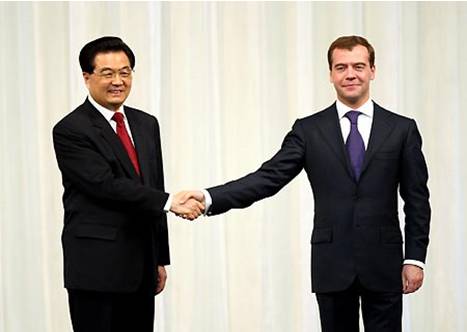Trialling something out ….
30 Nov
 Since the opening up in the mid-1990s, uranium exploration in Mongolia by international companies has not been subject to any clear national policy or close regulation.
Since the opening up in the mid-1990s, uranium exploration in Mongolia by international companies has not been subject to any clear national policy or close regulation.
In the last few years, however, the Government has sought to exercise more control over the whole mining sector and earlier this year it set up MonAtom to undertake uranium exploration and mining on behalf of the state, as well as to pursue nuclear energy proposals. It will hold the state’s equity in uranium and nuclear ventures, under the Mongolian Nuclear Energy Agency.
In mid-July, after consultation with the International Atomic Energy Agency, Parliament passed a Nuclear Energy Law to regulate the exploration and mining of uranium and give the state a greater degree of ownership and control of those resources. Along with this the Government set up Dornod Uran, a joint venture company between MonAtom and Russia’s ARMZ to develop two uranium mines in Mongolia — Dornod and nearby Mardai. A Japanese partner, evidently Marubeni, is also expected to be later involved in the work of this joint venture.
The development is of particular interest to Russia due to its proximity to the Priargunsky operations, allowing possible creation of a ‘single infrastructure. At least until mid-August, Canadian based Khan Resources owned a 69% share in the Dornod project, mostly through its 58% subsidiary Central Asian Uranium (CAUC). The balance of CAUC, which holds Mongolia’s only uranium mining license, was owned by MonAtom and ARMZ, each with 21%.
A definitive feasibility study released in March 2009 showed that the $333 million project was sound, on the basis of 24,780 tons of indicated resources, including 20,340 tons of probable reserves. Annual production of 1,150 tons over 15 years from 2012 was envisaged.
However, the Nuclear Energy Agency has announced that the joint venture of MonAtom with ARMZ will develop the project to annually produce about 2000 tons. Khan is uncertain where it stands, having apparently been dispossessed as it sought to negotiate an investment agreement with the Government.
Gurvanbulag is another deposit, about 30 km away, which has been held by the Canadian Western Prospector Group. This March the company agreed to a $25 million takeover by China’s CNNC International, a 74% subsidiary of CNNC Overseas Uranium Holding and through it, of SinoU. MonAtom appears to be positive about this development.
As an aside, I think the photo above says a lot about Sino-Russ relations ….
30 Nov
First off hello, I’m back blogging after a hiatus on here, has been a very busy 6 weeks or so since my last post, as have been blasted by a few things, not least amongst them getting Emerging Voice into shape.
So, a quick look around the blogosphere today has shown that markets have attempted to throw off the Dubai Debacle, but it would seem that not everyone has got the message. Some of the best from the last few days include :
Junior Deputy Accountant (comes with language warning) where Adrienne shares her usual eclectic mix with us : It’s a miracle ! The Bailout Will Save us All
The lovely Lynn Berman over at MarketNut gives us a pull down from the main & not so mainstream sites : Dubai Update
The hive mind of Emerging Voice has a myriad of offerings : Contagion to Tower of Babylon
& Josh over at Reformed Broker brings his own brain to focus on the topic : Dubai World & Bear Stearns : Coal Mine Canaries?
there has been plenty of sniggering & much joking about exchanging an island for a goat, but we leave you with this sobering picture
28 Oct
 Latin American nations are leading their Western counterparts with respect to diversity in renewable energy. Now GDF Suez has opened its 38 MW wind farm facility at Monte Redondo in Chile.
Latin American nations are leading their Western counterparts with respect to diversity in renewable energy. Now GDF Suez has opened its 38 MW wind farm facility at Monte Redondo in Chile.
Work on the wind farm began at the start of this year, with more than $100 million being invested, as GDF Suez commits to it’s green credentials in it’s South American operations. According to estimates, Monte Redondo will prevent the emission of 54,000 tones of CO2 per year, whilst providing energy for up to 60,000 homes.
“GDF SUEZ strongly believes in Chile and in the development opportunities it offers. The Group holds broad and multiple areas of expertise in this country and intends to further reinforce them.” said Gerard Mestrallet at the inauguration
Monte Redondo will also assist in providing long term stability in energy prices, as GDF Suez has already entered into a 14 year supply contract for 100 GWh/year, beginning in January 2010. Chile has historically been dependant upon gas imports from Argentina, which have been the subject of much contention, as Argentina seeks to secure it’s own domestic energy requirements & supply has fluctuated from agreed measures.
Chilean President Bachelet said that clean energy investments have grown sharply from a mere 2 MW in 2006 to 250 MW in 2010 & it would seem that this may be only the beginning of a love affair with wind power. By the end of the 2009, a further five new wind parks will begin operating in Chile, increasing the country’s wind energy production by a factor of 10.
These new projects are slated to produce 180 MW of wind energy, dwarfing the existing 20 MW currently produced by Chile’s two existing projects. According to the National Energy Commission, other new wind turbine projects which are currently under review or in planning will soon generate 1,500 MW for the country’s Central Power Grid. To put this into perspective, the country’s largest proposed hydro-electric project, Ralco, will provide 690 MW at full capacity.
It is encouraging to see real commitment from what people in the West term “developing” markets, Chile & Brazil are world leaders in the advancement of renewable energy & also in implementation of green policies down to grass roots level. Perhaps those of us in our ivory towers in Europe & the Us should pay a little more attention to what is being implemented in the southern hemisphere.